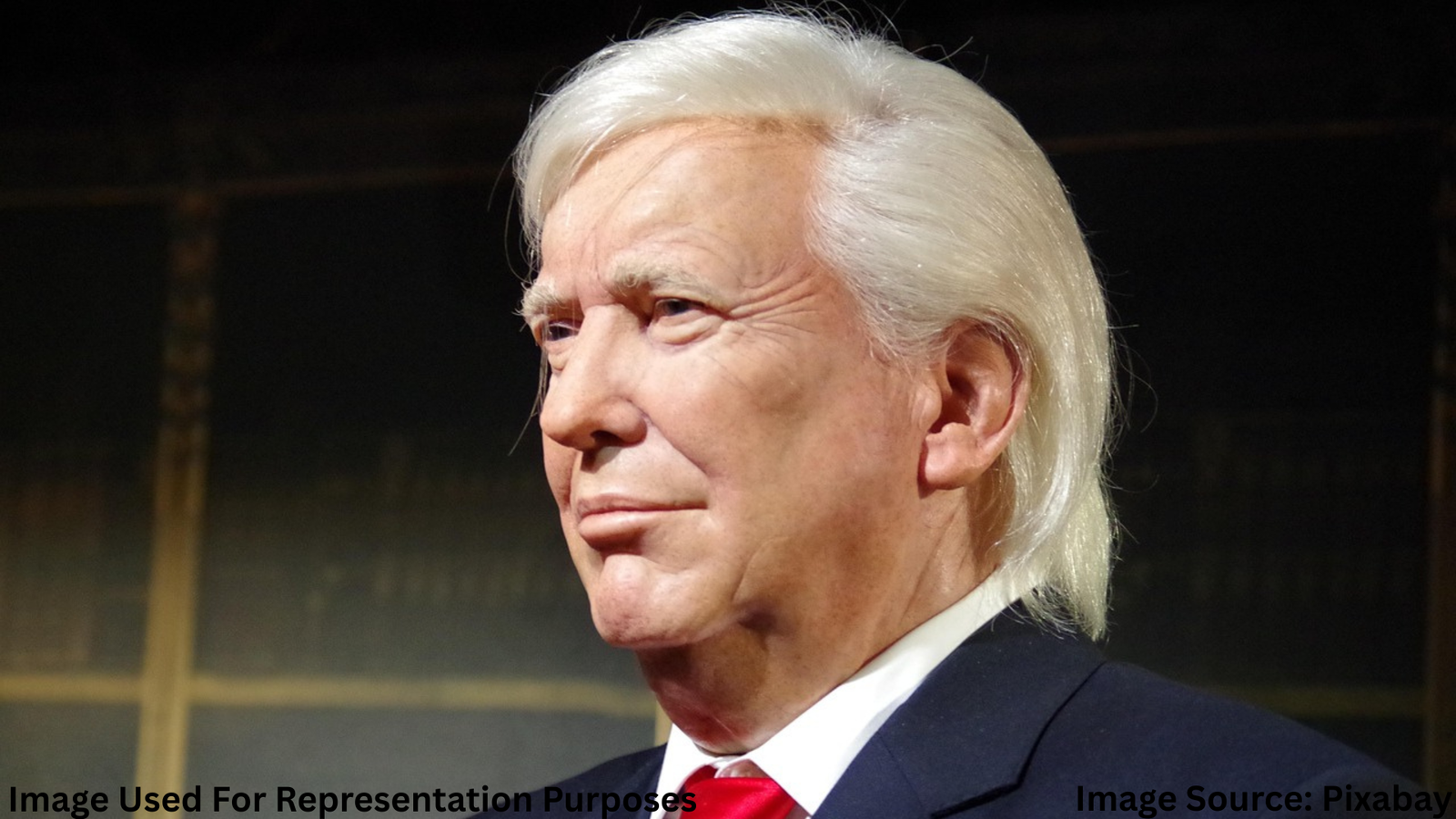
Trump deflected MAGA’s wrath over Epstein
Trump deflected MAGA’s wrath, as the public demand for answers in the Jeffrey Epstein saga intensifies, even Donald Trump’s most devoted supporters—the MAGA base—began showing signs of discontent. When new revelations surfaced suggesting that some Epstein-related evidence might never see daylight, right-wing influencers and Trump loyalists voiced their outrage. The backlash was immediate and loud—but Trump, ever the political tactician, found a way to calm the storm. At least for now.
This article explores how Trump deflected MAGA’s wrath over Epstein by deploying a series of calculated responses, blame-shifting strategies, and media manipulation—all designed to buy him time and maintain loyalty within his core political base.
The Epstein Uproar That Shook MAGA
MAGA’s Demand for Transparency
The MAGA movement, fueled by anti-elitist and anti-establishment sentiment, has long demanded accountability over the Epstein scandal. Epstein’s connections to global elites—and rumors of a powerful “client list”—created a perfect storm for conspiracy-driven factions. Trump supporters weren’t just curious—they expected full transparency from their candidate.
When the Department of Justice claimed that no client list existed and no more documents would be unsealed, backlash erupted. Social media lit up with accusations of betrayal. Figures like Laura Loomer, Glenn Beck, and Steve Bannon openly criticized the Trump administration’s response—or lack thereof.
The Role of Pam Bondi
Pam Bondi, Trump’s appointed special counsel overseeing Epstein-related communications, became a focal point of this fury. MAGA influencers demanded her resignation, accusing her of shielding the truth. Bondi, once beloved within the movement, suddenly found herself on the receiving end of conspiracy-fueled anger.
Trump’s Tactical Deflection Strategy
Trump has always excelled at reshaping narratives to suit his base. Here’s how he managed to deflect their anger over the Epstein revelations:
1. Labeling It a “Hoax”
Trump’s first move was familiar: dismiss and deflect. He labeled the outrage a “left-wing hoax” designed to sow discord among conservatives. In a Truth Social post, he called it “more fake news” from “the Deep State and Radical Left Democrats.”
This tactic worked—at least partially. Many in the MAGA movement are conditioned to see criticism of Trump as coordinated opposition. By portraying the Epstein scandal as a media trap, Trump steered attention away from himself and toward his usual punching bags.
2. Blame the Democrats, Not the DOJ
Rather than accept fault, Trump pointed the finger at Democrats. He claimed that any lack of transparency was the result of bureaucrats and “Obama holdovers” still embedded within the Justice Department.
He even stated, “If they’re hiding something, it’s because of the people Biden left behind. Believe me, I want the truth.”
This allowed Trump to position himself as a truth-seeker—even while his administration blocked full disclosure.
3. Backing Pam Bondi Publicly
Trump offered a full-throated defense of Pam Bondi, calling her “an incredible patriot” and “a woman of integrity.” While the base expected him to act, he doubled down on loyalty. His messaging became: trust Pam Bondi, trust me.
For MAGA followers trained in unwavering loyalty, this was enough for many to pause their criticism—at least temporarily.
Media Diversion: The Lawsuit Against Murdoch
Perhaps Trump’s most audacious maneuver was his $10 billion lawsuit against Rupert Murdoch and The Wall Street Journal. The suit centered around an alleged 1997 birthday letter from Trump to Epstein, which Murdoch-owned media claimed was “warm and friendly.”
A Legal Smokescreen
Trump’s lawsuit was framed as a battle against media defamation. But strategically, it also shifted public discourse. Headlines pivoted from “What is Trump hiding about Epstein?” to “Trump sues WSJ for $10 billion.”
This tactic effectively buried the MAGA backlash beneath layers of legal drama, allowing Trump to appear both victimized and aggressive—two traits his base admires.
The Grand Jury Gimmick
Amid increasing pressure, Trump announced he “supported” the unsealing of certain grand jury materials—but only what he called ‘pertinent’ records. Legal experts were quick to point out that grand jury materials are sealed by law and only judges can unseal them.
Still, the move gave Trump talking points.
Sound Without Substance
By appearing to advocate for disclosure, Trump gave the impression of transparency—without risking actual revelations. This political judo allowed him to say: “I’m trying to give you what you want, but the system is rigged.”
For many in his base, that was enough.
Why It Worked (Temporarily)
1. Familiar Enemies
Trump deflected attention by invoking old foes: the media, Democrats, and the DOJ.
2. Controlling the Narrative
By suing a major news outlet, Trump put himself back in control of the narrative. Instead of reacting, he was now on the offensive.
3. Echo Chamber Reinforcement
On platforms like Truth Social, Trump’s deflection was echoed by countless influencers. Their repetition solidified the narrative: Trump is under attack, not hiding secrets.
But Cracks Are Showing
Marjorie Taylor Greene Speaks Up
Even Trump ally Marjorie Taylor Greene expressed frustration, saying, “Dangling red meat no longer satisfies the base. We need truth, not optics.”
When loyal foot soldiers start questioning leadership, it’s a warning sign.
Influencers Aren’t Buying It
Prominent right-wing voices have started to splinter. Some accuse Trump of hiding behind lawsuits. Others say the “hoax” narrative is an insult to the intelligence of MAGA voters.
If that sentiment spreads, Trump’s grip on his base could weaken.
The Risk of Overplaying the Game
Trump’s deflection strategy hinges on timing. If the Epstein controversy fades, he wins. But if more documents emerge—or if other political figures are named—his current tactics might not hold.
Also, lawsuits, no matter how symbolic, risk revealing more than they conceal. A court battle with Murdoch’s empire could backfire if discovery reveals new facts about Trump’s connection to Epstein.
What MAGA Really Wants
The MAGA movement isn’t just about loyalty to Trump—it’s also deeply skeptical of elites and hidden power. The Epstein scandal, with its implications of elite corruption and exploitation, resonates strongly.
By refusing full transparency, Trump is now at odds with one of the movement’s core values: drain the swamp.
Conclusion
For now, Trump has managed to quell the backlash from his base over the Epstein revelations. By shifting blame, defending allies, launching high-profile lawsuits, and offering symbolic gestures of transparency, he’s bought himself time.
But the question remains: how long can he keep dodging this bullet?
The MAGA movement has long demanded accountability and truth. If Trump doesn’t eventually deliver—or convincingly shift attention elsewhere—he may find that even his most loyal supporters won’t be so forgiving the next time.

Akalumhe Jefferson is a content writer with a new found interest for crafting engaging stories that transport readers to new worlds. Although no current actual background in creative writing but there’s active love for writing



